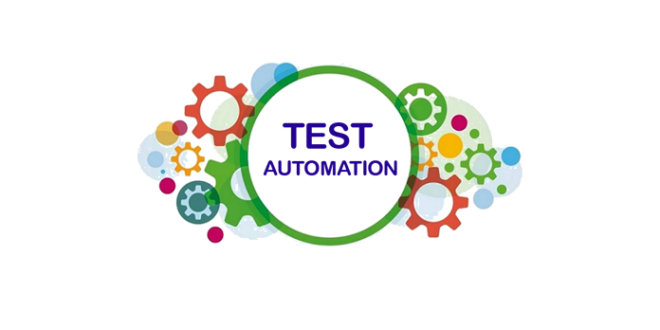Automation Testing Approaches: Best Practices for Seamless Integration
Automation Testing Approaches: Best Practices for Seamless Integration
Blog Article
Guaranteeing Success in Automation Testing: Key Metrics, Challenges, and Solutions Every QA Group Should Know
In the realm of software program top quality assurance, the landscape of automation screening is ever-evolving, requiring a careful technique to guarantee smooth operations. Key metrics work as the compass guiding QA teams through the substantial surface of examination automation, losing light on progression and locations for enhancement. Challenges loom large, typically casting darkness on the path to success. By comprehending these hurdles and carrying out reliable solutions, QA teams can navigate through intricacies with finesse. The trip to grasping automation testing is paved with subtleties that need a keen eye for tracking, analysis, and continuous improvement. automation testing. As the market pushes forward, the quest for optimum efficiency in automation screening stays a consistent search, advising QA teams to furnish themselves with the understanding and methods necessary for victory.
Value of Key Metrics
Understanding the relevance of essential metrics is necessary for assessing the performance and efficiency of automation screening procedures. Trick metrics function as quantifiable actions that give beneficial insights into numerous aspects of the testing process, such as test coverage, examination execution time, problem density, and test instance performance. By analyzing these metrics, QA teams can identify traffic jams, inadequacies, and areas for enhancement within their automation screening structure.
One essential facet of vital metrics is their capability to track progression and keep an eye on the overall health and wellness of the screening process (automation testing). They make it possible for stakeholders to make educated choices based on data-driven insights, which can lead to more efficient screening methods and much better resource allowance. In addition, vital metrics can help teams set realistic goals, measure the success of automation initiatives, and show the ROI of automation screening initiatives

Typical Challenges Dealt With
Obstacles commonly come across in automation screening procedures can considerably impact the overall efficiency and performance of QA groups. One of the significant challenges is the choice of the right test situations for automation. Not all test situations are appropriate for automation, and choosing the incorrect ones can cause wasted time and sources. In addition, maintaining test scripts can be a complicated task, specifically as the application undertakes constant modifications. Examination script upkeep calls for continual updates and adjustments to guarantee they mirror the existing performance precisely. An additional common difficulty is the preliminary investment required for establishing automation frameworks and tools. This can be a barrier for some companies, specifically smaller ones with restricted budget plans. Automation screening may not cover all elements of screening, such as use and user experience screening, which still need hand-operated intervention. Overcoming these challenges calls for correct preparation, calculated examination situation selection, durable maintenance procedures, sufficient sources, and a clear understanding of the constraints of automation testing.
Efficient Solutions for Obstacles
To address the obstacles come across in automation testing, carrying out reliable solutions is vital for enhancing the effectiveness and efficiency of QA teams. One key remedy is to buy robust training programs for QA groups to ensure they have the needed skills to properly use automation devices. Training can link knowledge spaces, boost understanding of automation structures, and boost scripting capacities, ultimately resulting in a lot more reliable examination production and implementation.
Another essential solution is to establish clear communication channels within the QA group and with various other stakeholders, such as programmers and job managers. Reliable communication helps in straightening assumptions, sharing development updates, and promptly resolving concerns or obstructions that may develop throughout the automation testing procedure.

Tracking and Evaluation Strategies
Carrying out reliable tracking and evaluation strategies is critical for guaranteeing the success and efficiency of automation testing processes. Additionally, assessing test outcomes and metrics offers beneficial understandings right into the top quality of the software program being checked and the effectiveness of the testing method.
One trick technique in surveillance and analysis is using control panels that consolidate pertinent metrics and KPIs in a visually accessible layout. These dashboards offer a detailed introduction of test implementation condition, test protection, defect fads, and various other critical details. Consistently evaluating and analyzing these control panels can help QA teams make notified decisions, prioritize jobs, and maximize testing efforts.
Furthermore, executing automated signals and notifications based upon predefined limits can improve aggressive monitoring and prompt treatment. By establishing informs for like it efficiency deviations or test failures, groups can resolve problems quickly and avoid them from escalating. In general, tracking and analysis methods play an important role in making sure the effectiveness and success of automation testing initiatives.
Continuous Renovation Methods
Enhancing the effectiveness of automation screening procedures necessitates the consistent refinement of methods and strategies. Constant enhancement techniques are pivotal for QA groups to adjust to progressing technologies and supply premium software. One vital approach to improving automation testing processes is to conduct normal testimonials and retrospectives. By examining past screening cycles, teams can identify bottlenecks, ineffectiveness, and locations for improvement. Carrying out feedback loops and including lessons discovered right into future screening frameworks can produce significant enhancements in time.

Verdict
In conclusion, it is critical for QA teams to understand the vital metrics, challenges, and remedies in automation screening to make sure success. By thoroughly monitoring and assessing data, executing reliable solutions to common difficulties, and continuously improving techniques, QA teams can optimize their screening procedures and deliver top notch software. Abiding by these techniques will ultimately lead to extra efficient and effective automation screening techniques.
By assessing these metrics, QA groups can determine bottlenecks, inadequacies, and areas for improvement within their automation screening structure.
Furthermore, essential metrics can help teams set reasonable objectives, determine the success of automation initiatives, and demonstrate the ROI of automation screening efforts.
Obstacles generally experienced in automation screening procedures can dramatically affect the general efficiency and effectiveness of QA groups. Automation testing may not cover all aspects of testing, such as usability and individual experience testing, which still require manual intervention.In conclusion, it is vital for QA groups to recognize the key metrics, challenges, and services in automation screening to ensure success.
Report this page